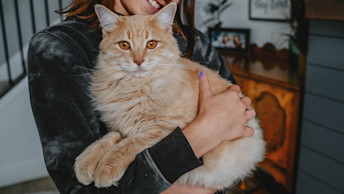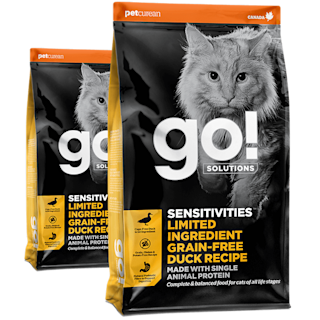February 20, 2025
Everything to Know on How to Switch Cat Food

Switching your cat to a new food can feel like a big task, especially if your furry friend is a picky eater. But with a little patience and a thoughtful approach, you can make the transition smooth and stress-free. Here's a guide on how to switch cat food while keeping them happy and healthy.
Why Transitioning Gradually Matters
Cats are creatures of habit. Sudden changes to their diet can upset their stomachs and lead to issues like diarrhea or vomiting. A gradual transition not only helps prevent digestive problems but also gives your cat time to adjust to the new flavours and textures.
Step-by-Step Guide: How to Switch Cat Food
When providing a new diet, it is important to slowly transition your cat to the new food, giving their digestive system a chance to adjust to this change.
This transition period can be between 10-14 days long, depending on your cat’s sensitivity to change:
Day 1 & 2: Feed 80% of your cat’s old food with 20% of the new food
Day 3 & 4: Feed 60% of your cat’s old food with 40% of the new food
Day 5 & 6: Feed 40% of your cat’s old food with 60% of the new food
Day 7, 8 & 9: Feed 20% of your cat’s old food with 80% of the new food
Day 10 & Forever: Feed 100% new food
Monitor your cat’s reaction at each stage. If you notice any digestive upset, slow the process down and extend each phase by a few days. Stick to regular feeding times and avoid introducing additional changes during the transition. Consistency helps your cat feel secure and more likely to accept the new food.
Troubleshooting Common Challenges
Picky Eaters
If your cat resists the new food, try warming it slightly to enhance its aroma. Mixing in a small amount of a favourite treat or wet food can also make it more appealing.
Sensitive Stomachs
For cats with sensitive digestion, look for foods with easily digestible ingredients and avoid sudden changes. A slower transition—over 10-14 days—can help minimize issues.

Recommended Solution
Cat Food for Sensitive Stomachs
Our Sensitivities limited ingredient cat food recipes feature a single animal protein source and novel proteins to support cats with food sensitivities.
View Sensitivities cat food
Sudden Refusals
If your cat suddenly refuses both the old and new food, consult your veterinarian. This could be a sign of an underlying health issue.
Tips for Long-Term Success
Stick to Quality: High-quality cat food with balanced nutrition is essential for your pet’s health. Look for products with named protein sources and minimal fillers.
Hydration Matters: Ensure your cat has access to fresh water, especially if transitioning to a dry food diet.
Routine Vet Visits: Regular check-ups help you monitor your cat’s health and dietary needs.
Switching your cat’s food doesn’t have to be stressful. With patience and a plan, you can make the change seamlessly. Remember, every cat is unique, so be ready to adapt the process to suit your pet’s specific needs.


